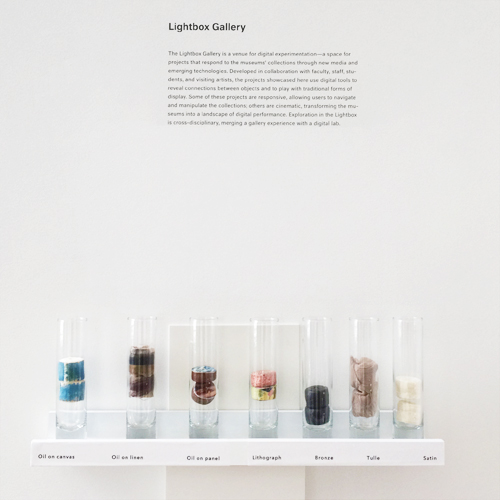Just as our new facility represents a fundamental reinvention of the museums, the data related to our collections has undergone an equally powerful transformation, expanding the reach of works we hold and providing different points of view on them. The recent Beautiful Data II workshop, hosted by metaLAB (at) Harvard and held at both the museums and the Carpenter Center for the Visual Arts, invited participants to rethink and reimagine the use of open collections data.
Supported by the Getty Foundation, the workshop attracted 23 curators, archivists, data scientists, professors, technologists, and historians from around the world, all of whom came together to work with collections data. During the 10 days of the workshop (the second iteration of last year’s successful event), participants were asked to consider collections data as a medium for art with its own curatorial and preservation challenges. In the process, raw data that sometimes never escapes a hard drive was uncovered to help visualize museum collections and culture—offering a language to ask and answer questions and a strategy to engage visitors. Attendees got their hands dirty by transforming metadata into art historical storytelling.
Several projects took advantage of the digital capabilities of our Lightbox Gallery. Francesca Bacci, a curator from MART Museum in Italy, designed a “touch and collect” experience, which involved letting visitors collect tactile beads in one of our European and American art galleries (2700) that replicate the materials used in works displayed there. Then, in the Lightbox Gallery, visitors could place the collected beads in tubes, each of which represents a different material. When a tube detects a bead, the video wall showcases all of the artworks made by that material.
Anne Luther, a visiting researcher at the Parsons Institute for Information Mapping in New York, and Nikita Braguinski, from Humboldt University in Berlin, addressed the question of how Harvard Art Museums’ data can be used to reach beyond the human-centric understanding of interactions with art objects. As an observer and participant in the workshop, I had the chance to brainstorm this open-ended question. If we were to hire a plant as a curator and let it curate an exhibition for non-humans in the Lightbox Gallery, how would the data be used and seen in the gallery? How can we visualize metadata in a way that crosses language and cultural boundaries? Do we collect the right data when we bear in mind both the present and future? Asking these kinds of questions leads us to think about how we can make better use of data and how we can use it to let visitors into the rich stories behind the works in our collections.
Sometimes this data allows us deeper into an artist’s thoughts, and therefore we gain insight into a particular work or an artist’s overall output. At other times, though, digging deeper allows us to tell an entirely new story. In Ben Rubin’s presentation of A Sort of Joy, a performance project at MoMA, I was struck by how the team had used data from MoMA’s collection database, such as artwork titles and artist names, to create scripts based on this information, weaving it all into a live performance. We saw the intersection of art forms, made possible through data.
Indeed, what the workshop helped reinforce for me is just how unlimited those possibilities can be. We must keep challenging our data to tell us more—and different—stories.
Ming Tu is the technology fellow in the Division of Digital Infrastructure and Emerging Technology at the Harvard Art Museums.




